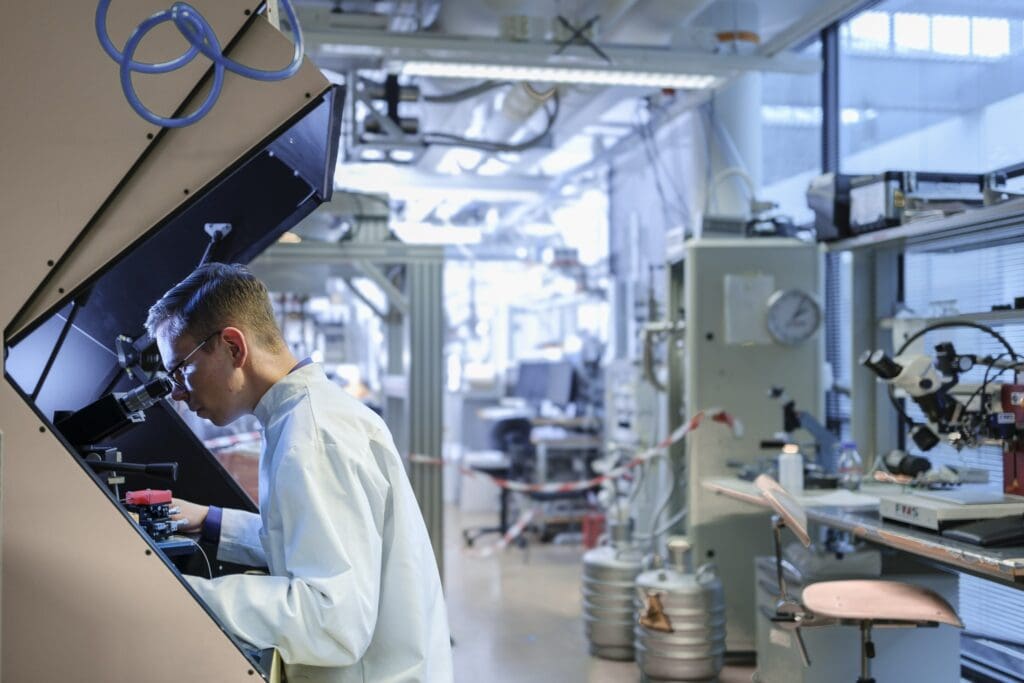How IP is powering the rise of black silicon technology from ElFys
Finnish deep-tech company ElFys is developing black silicon for ultra-sensitive light measurement. IP protection has helped it grow from a local university spin-out into a global technology leader.
In many industries, light is used as a measuring tool. It enables non-invasive analysis of tissue for healthcare, factories depend on optical inspection for quality control, and wearable devices use light to monitor the body. The more precisely and efficiently that light can be measured, the more useful it becomes across these and other applications.
This is where black silicon comes in: the material’s nanostructured surface traps incoming light by eliminating reflection. Finland’s ElFys is one of the few companies in the world to turn this effect into a commercial technology. Simply put, ElFys develops black silicon photodiodes that are extremely sensitive to light signals.
“Light can carry information. If you lose some of that light, then you lose some of the information. We prevent that loss, so that more of the light stays inside the detector and can be measured. This enables a far greater degree of accuracy,” explains ElFys Founder and CEO, Mikko A. Juntunen.

Overcoming early IP hurdles
The company grew out of Aalto University’s Electron Physics research group, where Juntunen and a small team were studying how to improve the efficiency of solar cells. During this process, they discovered and developed a more efficient way to use black silicon for light detection.
“Black silicon was already known, but it had too many surface defects for it to be used in sensitive light measurement devices. We developed a technology that fixes that,” says Juntunen. “Today, ElFys makes tiny components – from one to 15 millimetres across – that go inside larger optical instruments.”
While preparing to file its first patent application, the team had to address the fact that the invention’s main idea had already become public. Papula-Nevinpat was brought in to assess what could still be protected.
“In some countries you can recover from this kind of situation by using the benefit of the grace period. We went that route with ElFys and saved protection in a key market,” explains Jukka Korhonen, European Patent Attorney and Partner at Papula-Nevinpat.
ElFys now has several granted patent families and two pending applications. The portfolio covers several innovations around black silicon, protecting both the original invention and its practical use in measurement devices.
“Papula-Nevinpat has also handled trademark protection for ElFys, including registrations for the name and logo in Europe, the US, Japan, and other countries. Our ongoing work includes freedom-to-operate checks that support the company as it grows in different jurisdictions,” notes Juntunen.
New markets on the horizon
With this IP foundation in place, ElFys has begun scaling its technology into more sectors. The company’s photodiodes are already used in medical devices, industrial sensing, and scientific instruments. Discussions are now ongoing with customers in aerospace and dual-use technologies.
When working with these large international companies, ElFys has found that strong patent protection is a prerequisite for serious commercial engagement. Juntunen explains that customers want to see evidence of technology ownership.
“In early-stage hardware, the development cycles are long and expensive. You might spend years convincing a customer to integrate your component,” he says. “Having patents in place shows them you are credible and that your technology is protected. It’s an external stamp of quality.”
IP also plays a role in financing. Investors often evaluate a company’s patent portfolio before committing to long-term support. In this way IP is not just about legal protection – it’s a core part of business value for ElFys.
“The photonics community is small. Customers and investors often ask detailed questions about whether our designs could infringe existing patents. Together with Papula-Nevinpat, we continuously review the landscape to make sure we can operate freely,” explains Juntunen.
The company’s technology is also being adapted to new semiconductor materials such as germanium, extending sensitivity into the deeper infrared range. This allows ElFys to serve markets where black silicon detectors reach their limits.
“There’s a lot of interest in using germanium,” Juntunen adds. “We are essentially working the same magic with this material that we first did with black silicon.”